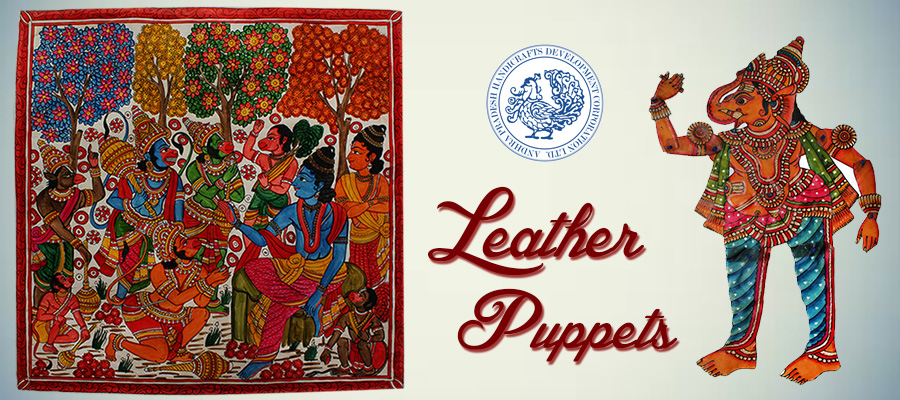
Andhra Pradesh is known for several art traditions, which is not just art items for the purpose of exhibiting, but they are part of a rich folklore tradition, deep rooted in the ethos of the state’s rural landscape. Leather puppets are the hallmark of Andhra Pradesh art and crafts. This form of craft is inextricably linked to the state’s traditional folk and cultural expression, called Leather puppetry. Also known as Tholu Bommalu or Tholu Bommalata, this form of shadow-puppet theatre is popular in several regions of Andhra Pradesh.
Tholu Bommalata
Tholu means leather in Telugu and bommalu means dolls. This form of art is believed to have originated in 200 BC during the rule of the Satavahana dynasty. They were instrumental in disseminating knowledge regarding Hindu epics such as the Ramayana and Mahabharata and local folk tales, to hinterlands and rural areas. The word Tholu Bommalata literally means "the dance of leather puppets”. The performance starts with many invocations while the ornate and strikingly stylized puppets are pinned in an overlapping fashion onto opposite sides of the screen. The leather puppets are then mounted down in the middle using a palm stem, which is extended to form a handle for moving the body of the puppet. The performing group consists of wandering entertainers and peddlers, passing through villages for many weeks in a year. They sing ballads, sell amulets, tell fortunes to the people and also perform acrobatics, take up pursuits like charming snakes, weaving fishnets, tattooing the local people and mending pots. This is an ancient custom that existed for centuries before the advent of modern era involving radio, films and television. The art form is a subject of academic study by researchers to understand its impact on the society, for many centuries.
Puppet Manufacture
The manufacture of puppets involves three types of skins such as antelope, spotted deer and goat. Antelope skins are usually used while making limited number of characters like important gods and epic heroes. Deer skin, which is known for its strength and resistance is used for the figures of warriors like Bhima and the ten-headed demon king of Ramayana, Ravana. Most of the other puppets are made from goat skin, which is readily available locally. The leather puppets are therefore obtained from pieces of hide or stiff parchment, and these are colored and bigger in size, when compared to similar craft work from other parts of the country. Themes from Hindu epics like Ramayana and Mahabharata dominate this form of puppetry, which is also considered an effective medium of communication
Communities Involved
Places like Nimmalakunta in Ananthapur district, Narsaraopet in Guntur district and D.C. Palle in Nellore district are considered the main centers of leather puppet industry in Andhra Pradesh. In Nimmalakunta, artisans practice this as a hereditary craft. The community engaged in this form of craft is mostly the Marathi Balija.

